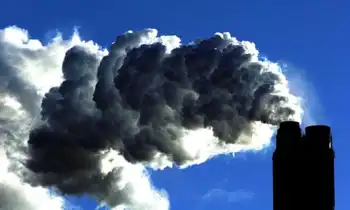AEP Ohio to use helicopters for transmission line work
GAHANNA, Ohio – - GAHANNA, Ohio – AEP Ohio, a unit of American Electric Power NYSE: AEP, and AEP Ohio Transmission Company will use helicopters and implosion welding to rewire the Sporn-Muskingum River 345-kilovolt kV transmission line from Waterford, Ohio to New Haven, West Virginia.
The company anticipates beginning the work Jan. 5, 2015, near Waterford, Ohio, and then work south. Work will be done during daylight hours, 12 hours a day, seven days a week and is expected to be completed by June 1, 2015. AEP has contracted with Winco Powerline Services, a Quanta Services Company, which will fly a black Hughes MD500 Helicopter. AEP has been using helicopters for aerial line work in Ohio for more than 10 years.
Implosion welding is the act of imploding, or bursting inward, of the metal on the 345-kV transmission lines to splice them together. The public can expect to hear a single burst for each weld along the line. There will be approximately 12 to 24 implosions per week.
AEPÂ’s construction philosophy for all projects focuses on the safety of the public, its employees and contractors. AEP will contact landowners prior to implosions in their area. AEP will contact local sheriffsÂ’ departments and local 911 to notify them of where and when work will be done and when it will be complete. AEP will remove all implosive charges daily from the work site.
The Sporn-Muskingum River 345-kV transmission line traverses approximately 50 miles across parts of Washington, Morgan, Athens and Meigs counties in Ohio and Mason County in West Virginia. Communities near the route include Waterford, Cutler, Coolville, Chester, and Racine in Ohio and New Haven in West Virginia.
This project is part of the companyÂ’s ongoing efforts to maintain and improve the reliability of its electric transmission system in southeastern Ohio and West Virginia. The company sought and obtained approval from state regulators to complete this project. The approximate $70 million investment by AEP will address generation facility retirements in the area.
Related News

Canada could be electric, connected and clean — if it chooses
TORONTO - So, how do we get there?
We're already on our way.
The final weeks of 2016 delivered some progress, as Prime Minister Justin Trudeau and premiers of 11 of the 13 provinces and territories negotiated a new national climate plan. The deal is a game changer. It marks the moment that Canada stopped arguing about whether to tackle climate change and started figuring out how we're going to get there.
We can each be part of the solution by reducing the amount of energy we use, making sure our homes and workplaces are well insulated and choosing energy…




